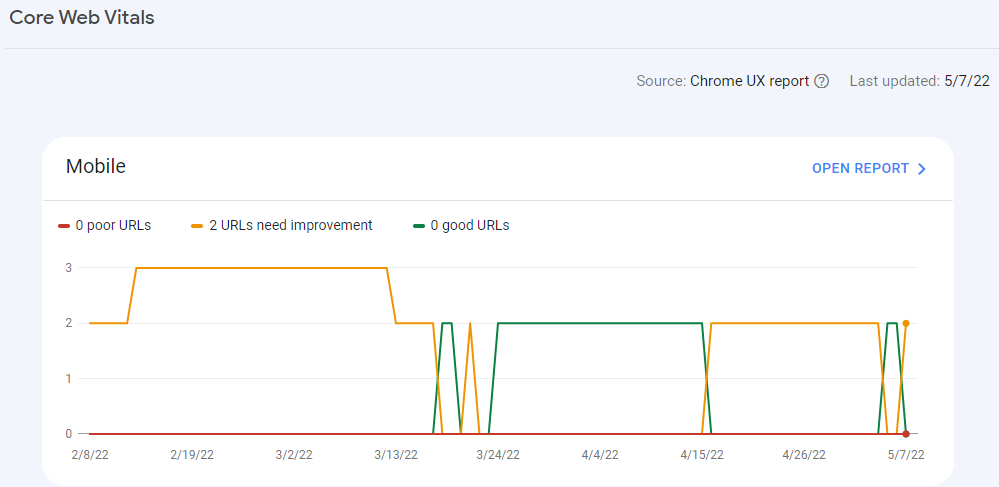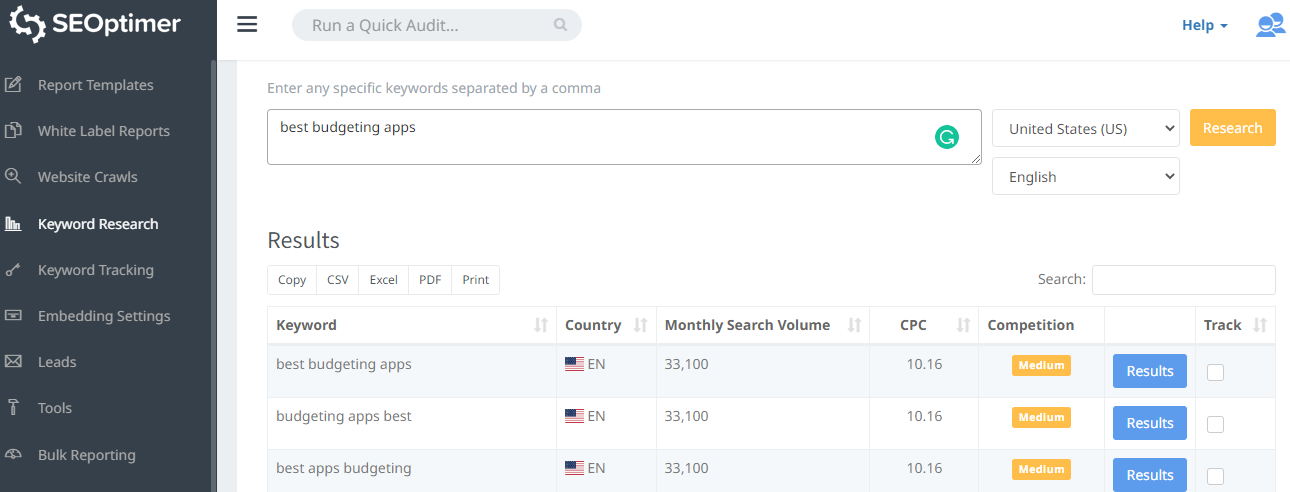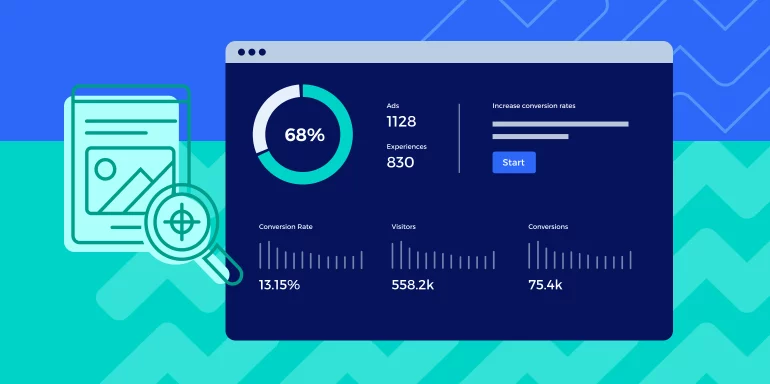SEO (Search Engine Optimization) helps you get long-term conversion results by generating targeted traffic at a sustainable cost. However, to obtain higher search rankings, you’ve got to create your landing page keeping search engine optimization best practices in mind.
This article will explain how you can optimize your landing pages for search engines.
What’s the purpose of a landing page?
Before we dive into some search engine optimization tactics, let’s briefly discuss the purpose of a landing page.
A landing page’s primary objective is to convert traffic into leads or even paying customers, depending on the aim of the marketing campaign.
Landing pages are often very simple and don’t have any navigational links to other pages.
Google Analytics classifies a landing page as any page a website visitor ends up on first. Google Analytics sees a blog post, contact page, or the “About us” page as landing pages if they’re the first places someone visits.

However, true landing pages are dedicated pages created for the sole purpose of converting traffic into leads or customers.
Why do landing pages need SEO?
The consensus is that marketers generally only send paid traffic in the form of PPC, social media marketing, or email subscribers to landing pages.
However, organic traffic — or, more specifically, SEO—is another useful channel marketers often neglect when thinking of ways to send traffic to landing pages.
Landing pages need SEO for two main reasons:
- It is sustainable, cost-efficient, and yields results in the long run. Because SEO is unpaid (except for the time and skill required to obtain high rankings), it can generate traffic for months and years to come without having to run a paid marketing campaign.
- SEO generates targeted traffic to your landing page(s). When someone searches for something on Google or any other search engine, they are usually looking for an answer to a problem or searching for a product/service. If someone clicks on your search result, they’re already in the market for a solution, product, or service.
SEO checklist for higher rankings
Now that we’ve clarified why landing pages need SEO, we’ll be sharing some SEO best practices you need to follow if you want to ensure that your page ranks on Google.
Ensure all on-page elements are optimized for search engines
Even before you launch your landing page, you should optimize all on-page website elements, also known as on-page SEO.
Google has said they use keyword usage in titles (one of the focus areas of on-page SEO) to determine a website’s relevance.

So which elements of on-page SEO should you focus on before launching your landing page?
The first aspect of on-page SEO we’ll discuss is optimizing your page’s content—which should be a relatively straightforward task, since landing pages usually don’t have as much content as a standard website.
Start by adding your target keyword and its variations to your page title, content, H2 heading tags, and URL. Use this target keyword within the first 100 characters on the page—for a landing page, this should ideally be somewhere above the fold.
Then, craft a catchy page title that will result in clicks. According to Moz, title tags are the second most critical on-page SEO ranking factor. It’s impossible to understate the importance of writing a compelling title.

The title tag is what people see when they’re browsing the SERPs, looking for an answer to their search query.
Here are three ways to create intriguing titles for your landing pages:
- Ensure your title tag is between 60 and 70 characters long.
- Always add your target keyword to the beginning of the title tag, or as close as possible to the front.
- Use title tag modifiers such as “best,” “top,” “free,” etc. If possible, use numbers in your titles—e.g., “The 15 best landing page builders in 2022.”
Landing pages should have imagery and other visual elements to convert visitors into buyers or leads. If you have an image above the fold, it would likely be the first thing a visitor sees and remembers about your page.
Because of this, you should choose attractive images that will convey a message to your audience.
For example, this Munchery page has a relevant, value focused headline and bright product visuals.

Once you’ve chosen the images for your landing page, you need to perform some image optimization—the next aspect of on-page SEO elements.
One of the things you can do to ensure higher rankings is to make sure you optimize your images for search engines according to the following suggestions:
- Always add descriptive alt tags to images that contain your target keyword and variations thereof.
- Compress images to reduce the webpage size. You can use image compression tools such as TinyPNG to make images smaller.
Another essential aspect of on-page SEO for landing pages is creating an SEO-friendly URL by adding your target keyword to the chosen URL and connecting it with your domain.
Also, don’t forget to replace any computer-generated URLs (e.g., domain.com/ep02njes54) with readable text that contains your target keyword (e.g., domain.com/best-tile-cleaners).
Check Core Web Vitals
Core Web Vitals refers to a set of metrics that evaluates and scores a page’s user experience. These metrics are a subset of a site’s Page Experience score and therefore form part of the more than 200 Google ranking factors.
Sure, having a high Core Web Vitals score won’t push your website to the first spot in the SERPs, but it could account for small changes in rankings.
To access this data, log in to your Google Search Console and click on Core Web Vitals under the Experience tab. Here, you can view the results for both desktop and mobile devices.
This report will show if there are any issues with your website’s Core Web Vitals.

Core Web Vitals consists of three different components: Largest Contentful Paint (LCP), Cumulative Layout Shift (CLS), and First Input Delay (FID).
Each of these components measures and evaluates different aspects of a page’s user experience.
Let’s break down how you can obtain a high score for each one.
1. Largest Contentful Paint
LCP measures how long it takes to load some of the largest elements on your page, such as images, videos, text blocks, etc.

Here are the factors that can result in a low LCP score and how to fix each of them:
- Slow server response time can adversely affect your LCP score. The solution to this is to upgrade to a better hosting package.
- Unoptimized resources such as images and videos can significantly increase page load time. To solve this issue, reduce all these elements to their smallest sizes. You could also use a CDN to shorten the time it takes to load your website, irrespective of where your visitors are in the world.
- Unnecessary third-party scripts have an impact on a page’s load time. If you can remove them, do so.
2. Cumulative Layout Shift
The Cumulate Layout Shift metric measures the visual stability of your website as it loads.
A low CLS score means on-page elements such as buttons, text, and images move around when a user interacts with your page, which can detract from the user experience.

To achieve a higher CLS score, you can:
- Make sure media elements such as videos and images have predefined size attributes
- Reserve space for any embeds or iFrames if you’re using them
- Use standardized fonts to avoid layout shifts and ensure that the browser loads them quickly
3. First Input Delay
First Input Delay is a Core Web Vitals metric that measures the time it takes the website to respond to any user interaction.

An example of this is the time it takes for the website’s navigation menu to open when a user clicks on the hamburger icon.
To improve your page’s FID score, follow some of these suggestions:
- Optimize your CSS code by minifying and compressing files
- Use a browser cache to load on-page content and elements faster
- Only use essential third-party scripts
- Use keywords wisely
Google and other search engines use keywords to understand what a page is about.
Because of this, it’s critical to use descriptive, engaging keywords if you want search engines to rank your page for your desired search queries.
By doing research, you can gain an in-depth understanding of which keywords you should use on your landing page.
The keyword research process consists of the following steps:
- Make a list of broad keywords that are relevant to your offering
- Conduct keyword research using a keyword tool to find low-competition, high-volume search terms
- Determine your primary target keyword, then create two to three variations of it

You need to add your target keyword to the on-page content. But unlike a blog post, where you can add the target keyword multiple times, you’re going to want to avoid overusing it on your landing page.
That’s because landing pages are usually short and to the point. Adding your primary keyword too many times will result in keyword stuffing—a tactic Google frowns upon.
Luckily, you can avoid this by including variations of your target keyword in your landing page content. Not only will this avoid keyword stuffing, but you’ll also increase the odds of ranking for other, related search terms.
Check for mobile responsiveness
Since most searches take place on mobile devices, Google heavily emphasizes mobile responsiveness when determining which pages to rank.
Google is so serious about a page’s responsiveness that they have publicly declared it is one of their ranking factors.

As a result, you need to make your landing page mobile-friendly. Luckily, most content management systems and landing page builders have that functionality as part of their offering.
If you’re unsure whether your landing page is responsive, you can use Google’s Mobile-Friendly Test tool to confirm.
Ensure your page adds value
Landing pages that feature only an offer and a CTA stand no chance of ranking in search engine results. Why? In Google’s eyes, these pages add no value.
Instead, you need to use your landing page to answer any related questions associated with the search intent.
For example, let’s imagine you’re trying to sell a new range of organic toothpaste. You could include information about why this product is useful, its benefits, and a comparison of organic versus traditional toothpaste.
Add all the necessary information to your page
Your landing page must include all relevant details about your products, services, and business.
You can feature some of the following information on your landing page:
- Any customer testimonials or product reviews
- A short snippet or piece of text on your business, its vision, and mission
- Product features and benefits
- Guarantees or warranties
The more useful and related information you add to your landing page, the better Google will understand what your page is about.
Generate more leads and sales with landing pages
Landing pages are excellent tools for generating leads or selling products.
By optimizing your landing pages for search engines, you can generate targeted traffic at a minimal cost for as long as the landing page is online.
Start creating and personalizing landing pages today with Instapage—the #1 landing page creator for marketers. Browse through Instapage’s pricing plans and choose the one that best suits your needs. Begin your free trial today.

Try the world's most advanced landing page platform with a risk-free trial.
